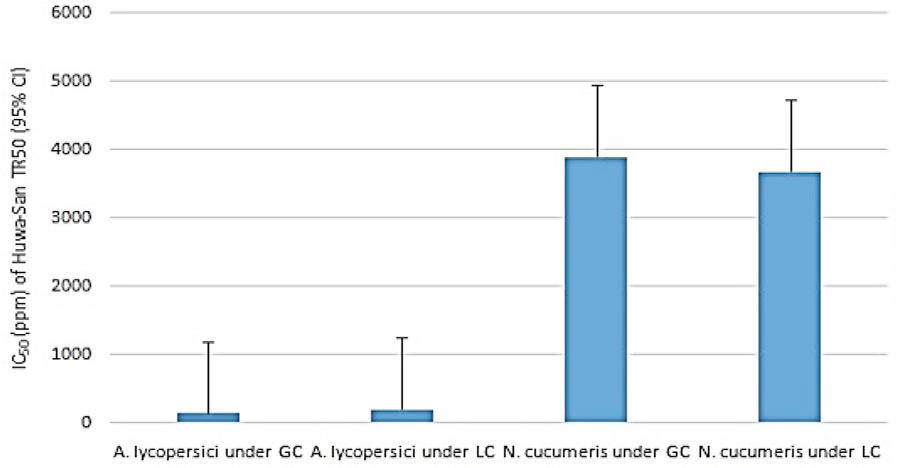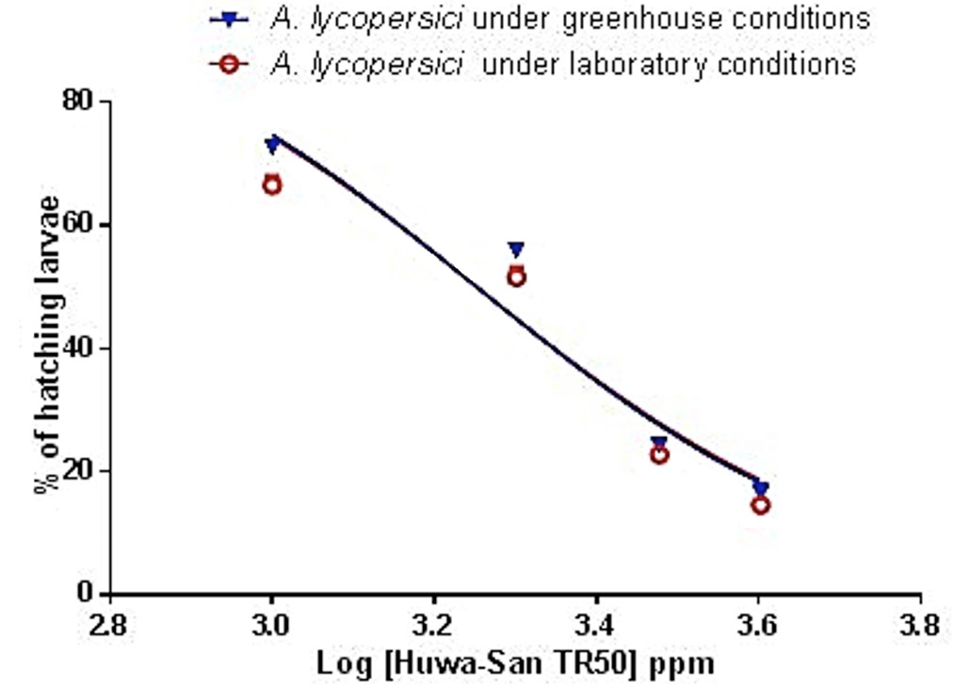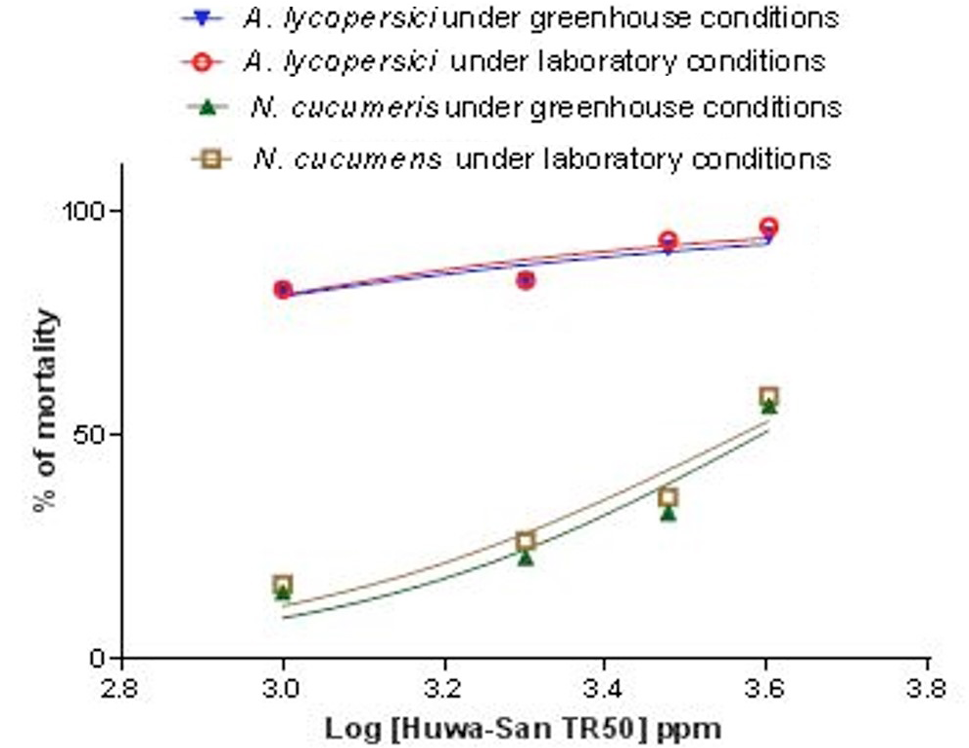Effectiveness of Huwa-San TR50 on Tomato Russet Mite Aculops lycopersici (Massee) (Acari: Eriophyideae)
Effectiveness of Huwa-San TR50 on Tomato Russet Mite Aculops lycopersici (Massee) (Acari: Eriophyideae)
Mahmoud M. Al-Azzazy1,2 and Saleh S. Alhewairini1,*
The difference between the IC50 values for the effects of Huwa-San TR50 on both tomato russet mite A. lycopersici and the predatory mite, (N. cucumeris Oudemans) (Acari: Phytoseiidae) under laboratory conditions (LC) and greenhouse conditions (GC).
Effects of Huwa-San TR50 on the average mortality on larvae hatching from eggs of the tomato russet mite under greenhouse and laboratory conditions after one week of exposure, expressed as a percentage of the control mortality in well water. Each point is the mean ± SEM of 5 replicates, but in most cases, the error bars are smaller than the symbols used. The lines were fitted using a non-linear regression (log (inhibitor) vs. normalized response- variable slope) in Graphpad Prism 7 with the maximum plateau being 80% and the minimum being 0%.
Effects of Huwa-San TR50 on the average mortality of tomato russet mite A. lycopersici and the predatory mite (N. cucumeris Oudemans) after one week of exposure, expressed as a percentage of the control mortality in well water. Each point is the mean ± SEM of 4 replicates, but in most cases, the error bars are smaller than the symbols used. The lines were fitted using a non-linear regression (log (inhibitor) vs. normalized response- variable slope) in Graphpad Prism 7 with the maximum plateau being 110% and the minimum being 0%.













